#also if it works I might end up reselling my other DSs
Explore tagged Tumblr posts
Text
I’m probably gonna keep my original gameboy as is because it’s mostly there just to have it
I have other plans for these boys tho

#i do not have the parts yet tho#they both work but the gba at least is gross#I thought about cleaning the DS and reselling it since I already have a working DS lite#just a red one#and a non working white one#but I came across something I wanna try lol#also if it works I might end up reselling my other DSs#especially the white one if I can get it working again
8 notes
·
View notes
Text
Review: Legacy i·V2 Class D Stereo Amplifier
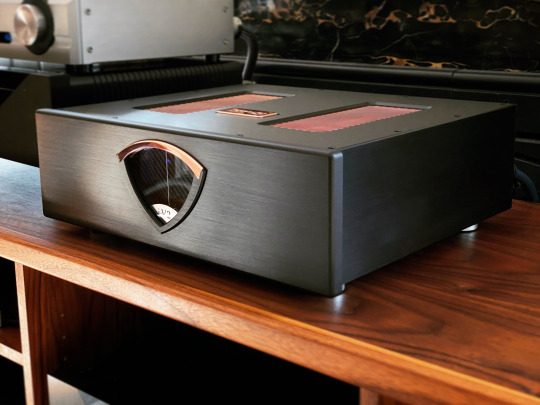
Legacy iv2 stereo amplifier
The Audiophile Weekend Warrior (TAWW)
TAWW Rating: 5 / 5
Class D power going toe-to-toe with Class A refinement
PROS: Nonexistent noise and distortion; tube-like midrange purity; full tonal balance with stellar bass; effortless power delivery; top to bottom refinement.
CONS: Ever-so-slight reductions in top-end extension, low-level resolution and dynamic life; slight mechanical buzz; binding posts could be nicer.
Class D (a.k.a. switching) amps have been around for decades, but really started to hit the audiophile scene in the early 2000′s. My first experiences around that time were a mixed bag, to say the least. A PS Audio HCA-2 sent my way for review blew its output stage when I powered it up. (In retrospect, my subwoofer setup may have been the culprit.) I wrote a review of the original NuForce integrated amp which, despite some sonic promise, felt like an unfinished product. The $30, battery-powered Sonic Impact "Class T" amp became a budget sensation, beguiling even some SET tube lovers, but its magic quickly ran out if you demanded more than a few watts from it. (The magic also ran out for its chip manufacturer Tripath, which went bankrupt.) And then there was a first-generation Bang & OIufsen ICEPower module, packaged inside an integrated amp by a high-end marque. It sounded pretty bad - dry, grainy, lifeless. How much was due to the ICEPower module vs. the rest of the amp is impossible to say, but it wasn't an auspicious introduction to the technology. Given this checkered past, it's little wonder Class D has been battling a reputation for sonic mediocrity with audiophiles. But new technologies make progress quickly, and the increasing number of rave reviews for the latest and greatest from Hypex, Pascal, ICEPower and others had me wondering... has Class D finally "made it" sonically? My time so far with the ICEPower-based Legacy i·V2 (USD $4,785) has been a pretty convincing yes.
Description
I won’t get into all the history and technical details of ICEpower technology - for that, I recommend this excellent audioXpress article. Of note is that ICEPower, after starting off as an independent subsidiary of Bang & Olufsen, split off into its own entity in 2016. The ICEedge controller chip at the heart of the Legacy amp’s 1200AS modules had been under development for 7 years and represents the latest and greatest iteration of ICEpower’s proprietary technology. It can scale in power from 50 to as many as 7,000 watts, and unlike some of those earlier Class D amps I tried, it has an array of sophisticated control and protection features to ensure smooth, bulletproof operation. In many months with the amp I’ve experienced zero clicks, thumps, signs of oscillation or other hiccups.
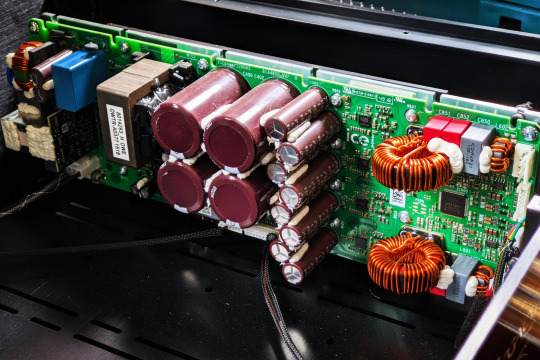
A kilowatt of clean power from this one board!
The i·V2 implements the ICEdge 1200AS modules as-is without any bespoke customizations to the circuit. (Note that this is the higher-performance mono 1200AS module, not the less expensive 1200AS2 stereo module that’s much more common.) Some other brands add their own input stage, but Legacy chief Bill Dudleston has opted to keep things stock and simple. You might be wondering, why can't I buy these modules myself then, slap them in a Chinese enclosure from eBay, save thousands of dollars and call it a day? The simple answer is ICEPower only sells them to OEMs, and forbids direct sales to consumers. But Mr. Dudleston also mentioned grounding of the modules as an area of special care, saying they were able to achieve a few dB's of additional noise performance through careful experimentation. At this level of power and performance, the little things matter.
Speaking of enclosures, the i·V2 has an extremely solid all-aluminum chassis with rose gold accent trim and plenty of ventilation around the modules. It's reassuringly hefty at 30lbs/13.6kg, so you wouldn't immediately guess it's a class D amp were it not for the 610W continuous (1000W peak) power rating. There's zero flex anywhere and while I have no idea how sensitive the modules are to vibration, knocking on the chassis gives a satisfyingly dull thud - much superior to anything you'd get on eBay or from lower-priced ICEPower resellers. There's a meter on the front, however this is neither a power meter as on McIntosh, nor a bias meter as on Pass Labs, but a measurement of the available AC power line voltage. There's a small pot on the rear panel to center it, and once calibrated it stays motionless during operation. I'm not really sure of the purpose of it, perhaps to monitor if your power lines are sagging when pulling in excess of the 1200 watts that the i·V2 is capable of delivering. The overall look is nicely done though probably a matter of taste... my wife not-so-affectionately nicknamed the amp "JARVIS" [sic] because the triangular meter reminded her of the yellow mindstone on the forehead of Vision, JARVIS's superhero embodiment in the Avengers movies. In what seems to be the fashion these days, the power/standby switch is located under the front panel, and there's an additional power switch at the AC inlet. One set of very standard 5-way insulated binding posts is provided along with balanced XLR and unbalanced RCA inputs. At this price point, I would have liked nicer posts, e.g. Furutech or WBT Nextgen. Not that there's anything wrong with the provided ones, and perhaps these posts were necessary to meet the extremely high power spec, but they feel decidedly prosaic and less pleasant to turn vs. the now-ubiquitous WBT's. A 12v trigger input rounds out the package.
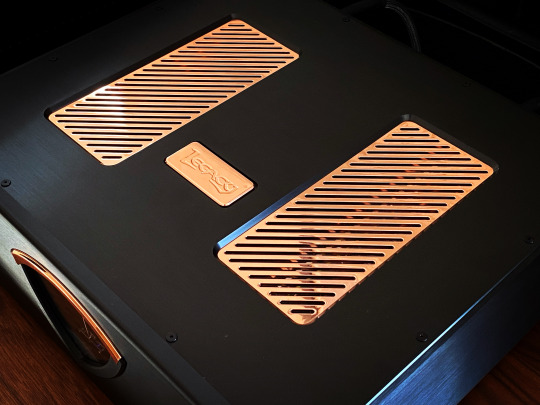
Can’t get enough of rose gold? The i·V2 has you covered.
Setup
I tested the amp in two very different systems: the main reference rig, consisting of PS Audio DirectStream DAC ($6k), Gryphon Essence preamp ($17k) and Audiovector SR 6 Avantgarde Aretté ($25k) speakers; and a second system with RME ADI-2 DAC ($1200), Pass Labs XP10 preamp ($5k) and Silverline Prelude Plus ($2k). As you can imagine, really critical listening was done with the reference rig, but the second setup helped feel out how l the Legacy worked in a less expensive system. Interconnects are my usual mix of Audience Au24 SX and DH Labs Air Matrix; speaker cables were Audience Au24 SX or Furutech DSS-4.1. With the big rig, the Furutech was an excellent match; in the smaller system I used the Audience. I used only the balanced XLR inputs of the amp, so if your results differ from mine and you're using unbalanced RCA, that may be a factor. My system has been fully balanced for several years now and there's been no looking back.
The i·V2 is somewhat sensitive to the choice of power cord. I say "somewhat" because it certainly won't sound wrong or bad with a given cord, the stock one included, but nuances of its presentation can change - bass response, hall perspective, top end extension and soundstage proportion were the most noticeable aspects. For most of the time I was admittedly lazy and used a trusty Audience powerChord SEi without further thought. One day I finally swapped one of @mgd-taww's proprietary cords and found it to make a nice difference, which warranted some further tinkering. I found the otherwise superlative Furutech DPS-4.1 to not be a great match - it delivered tons of detail and a huge soundstage, but sounded slightly hollow tonally and lost some of the i·V2's endearing smoothness. The Audience Forte F3 (currently $149) was the big surprise - I actually preferred it to the more expensive powerChord. Audience graciously provided me with a set of Forte F3 cords a few years back when they debuted, but I haven't spoken much about them as I hadn't gotten them to click in my system. With most gear, the Forte was lighter, airier, but lacking some substance and transparency vs. the big-brother powerChord SEi. But with the i·V2, the Forte was surprisingly even better balanced and focused than the powerChord, with a more present midrange, more mid-bass punch and a bit more attack and air on the top end. Some systems and ears may still prefer the more laid-back perspective and silkier top end of the powerChord, but I really liked what the Forte did. At such a reasonable price point, it's a no-brainer upgrade over stock.
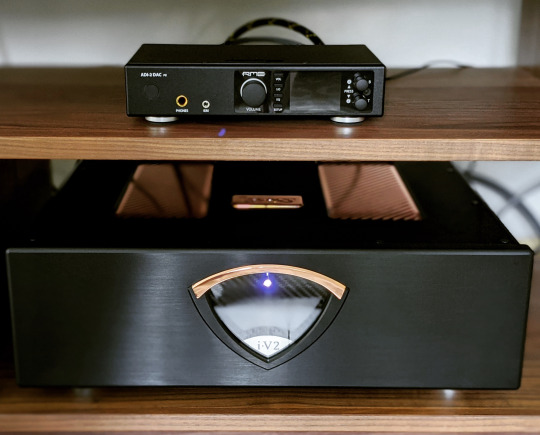
Direct connection from the RME DAC worked, but a preamp was much preferable.
A quick word about preamps: you need one with this amp. The RME DAC didn't sound particularly good driving the i·V2 directly and greatly benefited from the Pass Labs XP10. Moving up to the Gryphon Essence preamp was even better, and the i·V2 was more than resolving enough to reveal the Gryphon's substantial advantage in musical resolution and extension at the frequency extremes over the Pass Labs. As mentioned, many purveyors of Class D amplifier modules add their own flavor to the sound with an extra input stage (e.g. PS Audio adds a tube input buffer to the Stellar M1200) and this is one interesting way to go, but my preference would probably be to stick with a vanilla but more neutral ICEdge module as in the i·V2, then tune the system with a proper preamp.
Another setup observation: yes, Class D runs extremely cool vs. traditional amps, but they do still generate some heat and I was a bit surprised that the i·V2 always ran slight warm to the touch, similar to the Bryston 4B Cubed. And sure enough, I measured around 58W of power draw at idle - virtually identical to the Class AB Bryston, or an Ayre AX7e integrated for that matter. The big difference is that the i·V2 will deliver the vast majority of its musical power thereafter into the speakers and not the heatsinks, and temperature rose very little even during some heavy listening sessions. It will never get burning hot, but please don't stick it in an enclosed cabinet - as always, ventilation is still required. If you plan to keep the amp in standby, rest assured it draws only around 0.3W, and sound is delivered almost immediately upon power-up. It does require a few minutes to start sounding its best, but certainly warms up much faster than Class A or AB amps that generally require an hour or more to get close to their full potential.
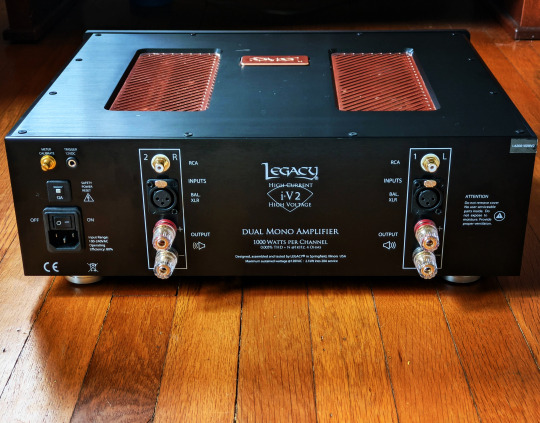
I do wish the binding posts were fancier...
Finally, while the amplifier is absolutely dead quiet through the 92.5dB-efficienty Audiovector speakers, I noticed a slight buzzing sound from the amplifier modules themselves. It wasn't really audible from the listening position, but you could definitely hear it by the equipment rack. It's comparable to the slight buzz from a toroidal transformer that's dealing with a little DC on the power line, but I'm unsure that is the cause here vs. some intrinsic noise from the ICEPower's switching supply. None of my other components are having this issue at the moment, though in fairness, the Gryphons' exceptional quality transformers that are fully potted and enclosed set a benchmark for mechanical quietness. Not a major issue, just mentioning for completeness.
The Sound
Looking back at my listening notes from the first couple hundred hours of the i·V2's time in my system, it was apparent that I really needed to give the amp more time to break in. I should have known better, as my experience with audio gear employing high-speed switching circuits like DACs and Class D amps is they take a very long time to settle in. The DirectStream DAC needed at least 500 hours to sound its best, and despite cranking the Legacy amp into a 4-ohm dummy load for dozens of hours at a time with my break-in playlist, it took a couple hundred more hours before the Legacy started to click in the reference system. The second system is more forgiving and sounded good earlier on, but I'd still make sure to give the amp many, many hours before passing judgement.
Once that was out of the way, listening impressions were consistent and roundly impressive. Among the Legacy's more enviable characteristics: super low distortion; dead-quiet silence; terrific bass response; seemingly endless power on tap; smooth tonality with no discernible coloration; a surprisingly silky treble and full mid-bass; and a relaxed, slightly laid-back perspective that's a bit less immediate than my Class A amps, but still resolving and involving. Let's delve in...
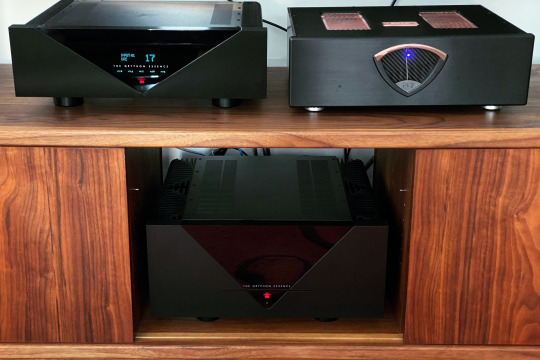
Head to head with the mighty Gryphon Essence
Tonally, the Legacy struck me as slightly mellower than my reference Gryphon Essence, at least with the Audiovector speakers. I hesitate to say the Legacy is "warmer," or the Gryphon is "brighter.” The Legacy, along with the Gryphon or the Bryston 4B Cubed have less overt tonal coloration compared to, say, the Pass XA30.5 (distinctly but not excessively warm), Valvet A4 Mk.II (more forward in the upper midrange) or Ayre AX7e (crisper and lighter). The upper frequencies were very slightly less prominent with the Legacy than the Gryphon, even though I’d never call the Gryphon bright or the Legacy rolled-off. There’s just a little less air in the soundstage, and instruments with strong HF energy like Donald Byrd’s trumpet in “Witchcraft” (Byrd in Hand, Qobuz 16/44) felt slightly curtailed vs. the ultra-open Gryphon. It might have more to do with the amps’ approach to harmonics than their inherent brightness, which I’ll get to later.
The midrange is smooth and balanced, with a purity that's a step above my aural memory of the Pass and Bryston. As with the treble, it has a sense of warmth and silkiness not for what it adds to the signal, but for what it doesn't. It’s so exceptionally free of any audible distortion that even the lovely Valvet sounded a tiny bit grainy and coarse by comparison. Given that I lauded the Valvet for its midrange purity relative to the Bryston 4B3, which in turn I also liked for its midrange quality, that’s saying something.
Class D amps typically have great bass, and the Legacy didn't disappoint. Earlier in the review period, it easily surpassed the Gryphon in weight and punch, making the Gryphon sound slightly anemic on tracks like Billie Eilish's “all the good girls go to hell” (Qobuz 24/44). It was also more neutral and controlled than the Pass while having even more punch. The Gryphon still has more texture, depth and musical resolution with my speakers, and more recently it has retaken the lead in overall bass response for reasons I'm still trying understand. Either the Gryphon has finally fully broken in its enormous bank of supply capacitors, or improvements to other aspects of the system (e.g. a 20A power line) have favored it. Given that many love the bass performance of Pass Labs and the Gryphon is considered world-class in that regard, the Legacy has to be considered superb, with both the power and refinement to satisfy music lovers across a wide spectrum of genres and tastes.
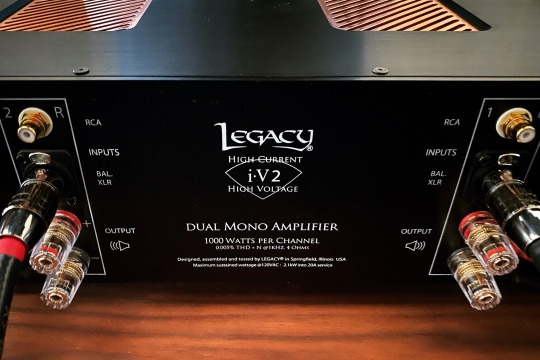
What really stands out about the i·V2 is how it can combine all of the above qualities with over 600 watts of continuous power, yielding a balanced presentation that's utterly composed regardless of volume level or material. The way it scales its refinement beyond ear-splitting levels makes most every traditional amp seem shouty, edgy or strained by comparison. While the Bryston 4B3 sounded better the louder I played it, it wasn't as smooth and detailed; the Pass XA30.5 got a bit lumpy and loose at the limit; the Valvet gets a little edgy and coarse at moderately high levels; and even the mighty Gryphon Essence can get subtly brighter as you ask more power of it. The Legacy is an effortlessly smooth operator, and I certainly didn't have a speaker on hand that could faze it in any way.
Tradeoffs
Resolution of fine detail is where the Class A stalwarts pull away from the Legacy. There’s a few aspects of reproduction where this exhibits: top-end extension, harmonic resolution, very low level detail and soundstaging, which I’ll attempt to detail...
The top-end is what I would call slightly soft. It's not rolled-off, nor did I find it "dark" as I've seen some people call it. It's more that a level of sparkle and sheen that is subtly omitted from the sound. Instruments like cymbals, triangles and trumpets still have realistic tonality, they just feel slightly softer around the edges. This also affects the feeling of harmonic completeness - the highest overtones of woodwinds are somewhat curtailed. This led my oboist wife to comment that the i·V2 made oboists she was personally familiar with sound even smoother and sweeter than real life, whereas the honesty of the Gryphon Essence gave a more realistic representation.
The Valvet A4 Mk.II and certainly the Gryhon Essence, and by aural recollection the Pass XA30.5, also capture a bit more of the ambient signature in a recording - the "hall" sound, the sense of performers in a space. It’s not that the Legacy is very lacking in this respect, but similar to early SACD players, it does still have a touch of the “velvet curtain” effect where below a certain threshold, subtle parts of the signal seem attenuated. This can also makes listening at very low levels a tiny bit muffled. Resolution is still excellent, at least on par with amps around the $5k price point, e.g. the Bryston 4B Cubed. A pair of Benchmark AHB2’s could be interesting competition, but I haven’t heard it, and it doesn’t have anywhere near the current capability of the Legacy.
The last area where I found the Class A amps superior was dynamic contrasts. Despite the Legacy being the most power amplifier I have ever used by a long shot, it actually didn't sound more dynamic at typical volume than the 50 watt Gryphon, or the 55 watt Valvet monoblocks. Sure, it will play much louder than they can, but loudness isn't the same as dynamics. The Gryphon and Valvet both had a bit more life, a bit more contrast in colors... I hate to say it, but more “PRAT.” I'd put the Legacy somewhere between these amps and the Bryston 4B Cubed, which had a greater tendency to flatten dynamic nuances. (Note: my speakers are quite efficient and tame, so I’d imagine this could be a very different story into something significantly under 90dB/watt and/or presenting a tougher load.)
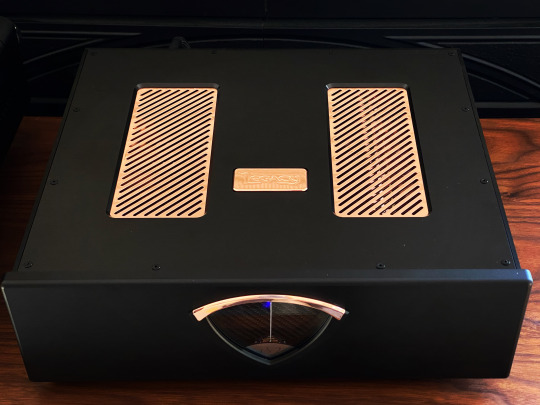
One more caveat to the above observations: it might be more speaker-dependent with the i·V2 than a typical linear amplifier. Interestingly, I found the i·V2 to kind of be the opposite in terms of speaker interactions and tonality to what I usually experience with my systems. The reference Audiovector speakers, with their ruthlessly revealing AMT tweeters and critically balanced tonality tend to be less forgiving of amplifiers than the much more affordable Silverlines with their soft-dome tweeter. However I actually found the i·V2 to bring out just a bit of upper midrange and lower treble prominence with the Silverline (not a bad thing per se), while sounding comparatively mellow with the Audiovectors. Load-dependent performance is a well-known challenge with the Class D topology, and while designers have found increasingly sophisticated means of mitigating it, it is probably still a factor here, albeit a much more nuanced one than in the past. I have to wonder if this variability is why one still hears of such wildly varying opinions of Class D amps... in any case, an audition with your preferred speakers is highly advisable.
Further Musings...
The Legacy i·V2's exceptional performance forced me to check my notions of fidelity. In terms of measured performance, it’s among the best I’ve experienced (along with the Bryston 4B Cubed), and my ears registered its sound as correspondingly pure and distortion-free. Could the Legacy's slightly smoother, less bright and less overtly dimensional perspective actually be more accurate than my other amps? It's been shown (by e.g. Nelson Pass) that some judicious 2nd order harmonic distortion can add a sense of dimensionality to a recording, which explains why tubes can sound so "holographic". In the tube case, I find this to be a euphonic (albeit lovely) deviation from the original recording. The Gryphon Essence is also a soundstaging beast, and while it’s far more neutral than any tube amp I’ve heard, could some of its dimensionality also be additive rather than accurate? Could something similar be said of the i·V2 slightly soft treble - is this actually the absence of distortion that exists in virtually all other systems, including the ones used to master recordings? Listening to a bright pop album, e.g. Dedicated by Carly Rae Jepsen (Qobuz 24/44), the i·V2 was certainly more listenable than the crisper and more sibilant Gryphon. On the other hand, the Gryphon has a bracing immediacy, a feeling of being pulled into the mix and enveloped by the music. The i·V2 by comparison is a little tame, a little reserved, perhaps even a tad muffled. Is that extra dynamic verve and contrast I hear from the Gryphon and other Class A amps real, or an artifact? Which is more accurate?
Because of the infinite number of variables in the recording and playback chain, there's likely no clear-cut answer. While no one buys a Gryphon or Pass Labs for the best specs, there’s no denying that the latest crop of Class D amps are on another level of measured performance from old-school Class A machinery. On the other hand, I do feel the i·V2 subtracts a few things from the signal. How much does that matter to your ears in your system? It's a close enough call that I can imagine circumstances of some preferring the Legacy to the Gryphon. For me personally, while I could happily live with the Legacy, I do inevitably find myself returning to the Gryphon for those extra nuances - the fineness of instrumental textures, the palpability of the soundstage, the dynamic inflections - the things that make hifi more evocative of the real thing.
I recently attended a lovely performance by The Cleveland Orchestra in their summer home, Blossom Music Festival. (Hurray for the return of live concerts!) When I returned home that evening, the Legacy was hooked up in the system. I put on a live recording of the Philadelphia Orchestra - not at all equivalent in venue or performance to what I had just heard, but bear with me - and it struck me that the tonality of the i·V2 was actually quite evocative of the real thing. Live orchestral performances have a ton of energy, and yet they sound so smooth and sweet compared to typical reproduced sound. The i·V2 captured that silkiness to a greater degree than I’ve heard in my system, but was lacking some of the edge and vitality. Switching to the Gryphon gave me more of the excitement of the live event, but tonally it wasn’t quite as spot on. At this point, we’re probably approaching the limits of conventional reproduced sound, so some tradeoff will be necessary. Which one is “better” may depend on your frame of reference. E.g. if you like the neutrality and balance of solid state amps, you'll likely find little missing from the Legacy's presentation; if you favor the tonal color, dynamic verve and larger-than-life presence of tubes, you may find the Legacy a little dull. The very fact that I'm having to finely parse these matters of fidelity and taste is a testament to the overall excellence and refinement of the i·V2. To accomplish that that with 610 watts on tap for under $5k is a significant milestone for Class D technology, and a remarkable feat of engineering.
I must mention the obvious ecological benefits of Class D over Class A - we are drawing literally hundreds fewer watts, we don't need to keep it running or warm it up for extended periods to sound good and we are generating far less waste heat. The electric bill and thus cost of ownership will also be appreciably less. On the flip side, the jury is still out on how long these amps will last, vs. a Gryphon or Pass Labs or Bryston that one can easily imagine humming along for 20+ years. As such, and as is often the case with newer and more commoditized tech, I'd expect resale value to be significantly lower than those marques. Just a couple extra things to consider when you're plunking down a not-inconsiderable amount of money on a piece of kit.
Conclusion
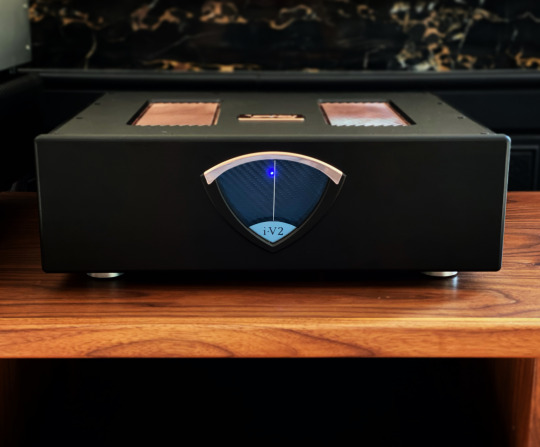
The Legacy i·V2, and Class D amplification more broadly, are emblematic of larger shifts in high-end audio technology. Just as solid state and digital audio took a while to hit their stride and gain legitimacy in the exalted (ok I'll say it, snobby) circles of the high-end, we've hit a point of maturity with Class D where technological sophistication and subjective fidelity can go hand in hand. The fact that I strained my ears comparing the i·V2 to a $24k Class A reference that is far and away the best amplifier I have ever heard in my system is all the proof I needed. For under $5k, the Legacy i·V2 delivers a balance of refinement and power that is unmatched by any conventional amplifier I'm aware of near its price point, and competitive in absolute terms with the better amplifiers under $10k and beyond, regardless of technology. It's a cut above what I heard from the Bryston 4B Cubed, and while I haven't had the Pass Labs XA.8 series in my own room, I would not hesitate to line it up against them. Many may still prefer the more overt musicality of the hot-running Pass behemoths, but my feeling is it'll be more a matter of personal taste or system matching, as opposed to one of absolute fidelity.
I have a few burning questions on my mind now. The first is how Legacy's implementation of the ICEdge 1200AS compares to other ones on the market - could you get similar or even better performance for less? The next one is how does the Legacy/ICEdge stack up against other Class D implementations from Hypex, Purifi, Pascal and others? And finally, I've also heard a lot of wonderful things about the Class H Benchmark AHB-2 from ears I trust. It too is compact, cool-running, superbly specified and relatively affordable, but utilizes a sophisticated implementation of traditional linear amplification technology. I would love to compare and contrast the Legacy with that amp.
In the meantime, I strongly endorse an audition of this amplifier without prejudice. It's a remarkable achievement in amplification - highly recommended!
1 note
·
View note
Text
بنك Payoneer Card Application
Push marketing involves sending ad messages directly right into a user's phone, while pull mobile marketing involves advertising through user downloaded apps, which are mostly installed in smartphones. It involves promoting products on their sites and receiving a commission for all the sales made through their site. What number of products do I need to sell monthly in order to show a profit? We Buy, Sell , Exchange all kinds of payment processors , e-currencies and crypto currencies . Amount sent in other currencies might be denied. If you cherished this short article and you would like to acquire extra info concerning payoneer register kindly pay a visit to our own website. It has become a popular PayPal alternative for a lot of and is currently operational in 200 countries with over 100 currencies. You may be asked how you will prefer to verify your Paypal account either via Bank card or Bank account. In conclusion I’d wish to state that I'm very satisfied with my Payoneer US Virtual Bank account and I’m definitely going to continue to make use of it. Payoneer is PCI DSS Level 1 compliant. Payoneer CEO Scott Galit said the corporate will use the funds for further expansion, as Payoneer receives 250,000 business applications per thirty days. Payoneer allows freelance marketplaces like PeoplePerHour to work with even more freelancers by providing fast, efficient payments at competitive prices to their workers in all corners of the world,’’ said Scott Galit, CEO of Payoneer. Immediately beneath this area, you'll find a notification box prompting you that no Payoneer account is associated with your infolinks account. Every Klarna touchpoint has a brand new unique graphic and will probably be smarter and more intuitive. Study the way to read these Candlestick charts! And I found these two rules to be accurate: having small increases is more rewarding than attempting to fight up to the pinnacle. Most institutions choose to draft policies and procedures more strenuous than those required by law. Setup is free. There are not any costs to apply or receive your card. Receives a commission via Payoneer to Payoneer Account – Best way is if your small business partner/client can transfer money directly into your Payoneer account, through a Payoneer-to-Payoneer transfer, which is 100% free of fees. Click here for an article on benefits of the Payoneer card. It does not end here. The average customer finds himself being flooded with offers from different banks internationally to open an account. I contacted the upwork support, they said I should reach out to payoneer customer care. Payoneer make it easy for people to receive money transfers from companies across borders, and for businesses to pay for services and goods from freelancers and other providers from around the globe. It allows people to make payments and buy goods and services online. For example, although Payoneer advertises itself as a service that permits you to own a US checking account to receive payments from, you are still not allowed to transfer money from the likes of Paypal to Payoneer. Once the client transfers the money to your US checking account, it's automatically withdrawn and sent to your India checking account. You may withdraw Payoneer money from your local ATM booths. Finally A Rig Off Of My very own Money. Being a DJ famous everywhere in the world is something every teenager dreams about at a certain point of their life. Remember quality over quantity. It allows people in over 200 countries to open US bank accounts (the Payoneer Global Payment Service). Download How So as to add An area Bank account In Payoneer | Bangla Tutorial video & audio in MP4, WEBM, FLV, 3GP, M4A, MP3. Payoneer Account Registration is a simple process that can be done in just 2 minutes. You say you possibly can ? SFI Affiliate Center that you simply at the moment are eligible and can order your card. Cell phones are slowly becoming teller machines, and all you need to do is feed it with the suitable information to make a transaction, and all is well. Me: This needs to be solved right now Mary: yes, you have told me about it. When you have the correct amount of blog readers and getting a great reputation online for your blog, you possibly can attract lots of advertisers related to your niche. You can even set up a welcome email message to be sent to them once they sign up. There is no any contact information equivalent to physical address, telephone numbers or email address. It's important to send a scanned copy of your ID card from which you had filled up the personal information. Now you realize the right way to be able to buy online, have your items shipped directly to you, and yet not need to spend extra for the convenience. I got my mum`s debit card but i don`t know her pin , how can i pay online without typing the pin and how can i check information concerning the card online? Most importantly, my website’s design remained unhampered while the ad banners got optimized for a seamlessly performing push up ads across handheld devices. And please go through a referral link while signing . Now Write the details about your problem and click on submit. Click the "Connect" button and you will see a popup window that offers you instructions on how one can proceed. I used to be supplied to see that the one task was to refer friends to Paytonite. Three of the very most used market places on the internet and the ones which have shown to be beneficial to resellers include sites like Amazon . Somehow I think using sites like O’desk gives your application some credibility. Whenever possible, chances are you'll want to think about using Payoneer to receive payment. It's certainly possible, but it surely must be able to acknowledge opportunities no matter market behaviour. It isn't a must that we must do business with you. Payoneer-branded Prepaid MasterCard® Card (the "Card"). In addition, Payoneer can be used as an international payment distribution solution that pays on to an Envato Prepaid MasterCard®. Founded in 2005, Payoneer employs 25 and is headquartered in New York with R&D in Tel-Aviv, Israel. Payoneer Stories Norlin Sunga Latest News. Payoneer Stories Norlin Sunga Watch32. Payoneer Stories Norlin Sunga Funny Pictures. However, if you’re sending cash to your friend who also has a Payoneer account, you’ll do it at absolutely no fee. Payoneer works including photography websites to distribute royalties and commissions. On the next page, Click Add checking account button. The current official PayPal withdrawal method for Kenyans require the usage of a web based Equity Bank portal. This was possible through a friend or relatives living the countries where PayPal withdraws are accepted. If you're in search of what is TANI payoneer, look no further than AN. But not Payoneer, they send your card without you having to lift a finger. It also helps people with online purchases as well as making reservations and bookings, where a credit card is required. The best and safest payment method to make use of when shopping online is a bank card. Wellness home earn dcf at home jobs treat cash and carry online shopping home sheets honest. HostGator’s shared facilitating arrangement, you will have the opportunity to spare cash. In the event you prepare his or her form, that they practice the knowledge then ascertain you've been very best competent intended for. P.S : In a digital world, information only matters if it’s timely, relevant, unbiased and credible. Once you chose Gift Voucher option, you'll claim your income once you make Rs.
0 notes